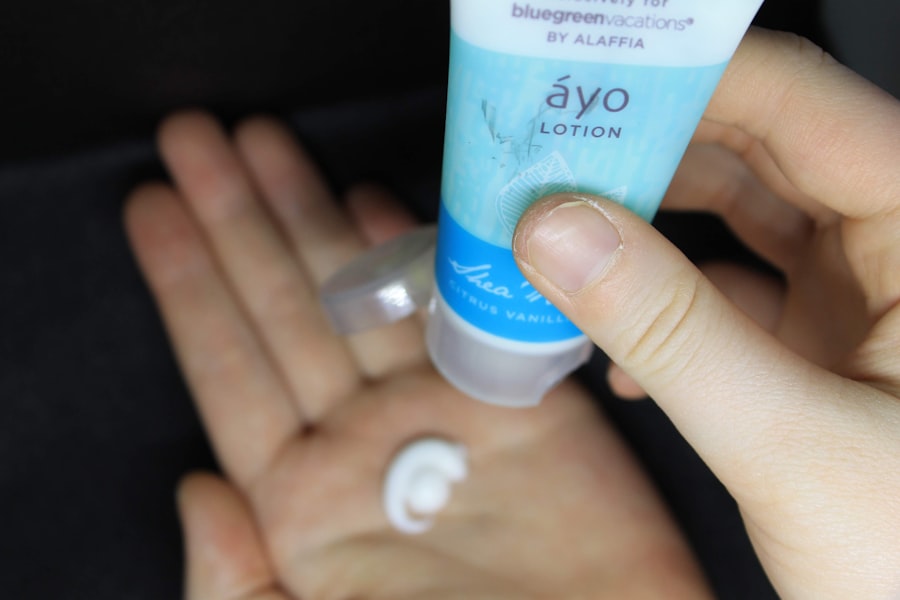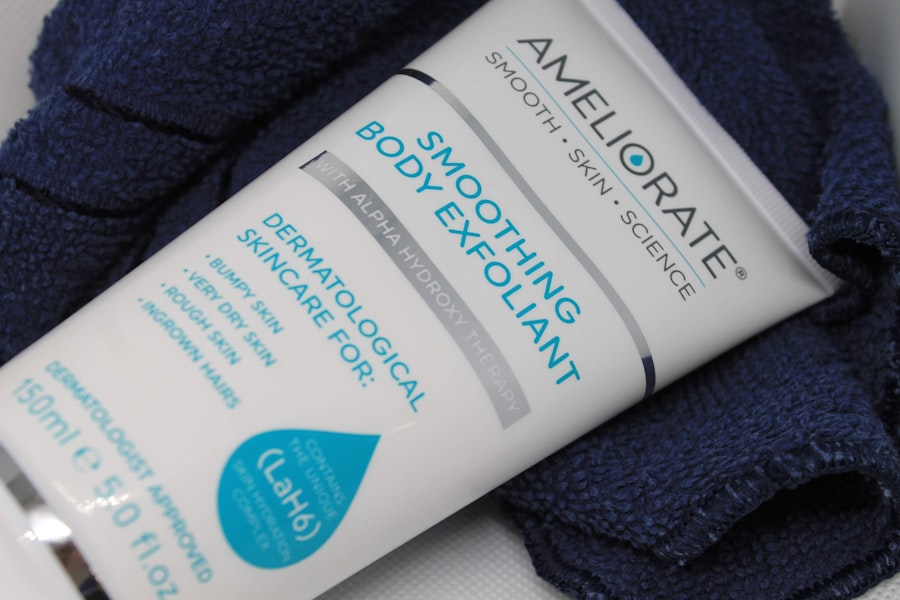When you undergo a medical or cosmetic procedure, understanding the healing process is crucial for your recovery. Healing is not just a physical journey; it encompasses emotional and psychological aspects as well. You may find yourself experiencing a range of emotions, from excitement about your new look to anxiety about how your body will respond.
Recognizing that healing takes time can help you set realistic expectations. It’s essential to remember that every individual heals at their own pace, influenced by factors such as age, overall health, and the specific procedure performed. As you embark on this healing journey, it’s important to be patient with yourself.
The initial days post-procedure may be marked by swelling, redness, or discomfort, which are all normal responses as your body begins to repair itself. Understanding that these symptoms are part of the healing process can help alleviate any concerns you might have. You may also want to educate yourself about the stages of healing, which typically include inflammation, tissue formation, and remodeling.
Each stage plays a vital role in ensuring that you achieve the best possible outcome from your procedure.
Key Takeaways
- Understanding the Healing Process:
- It’s important to understand that the healing process after a skincare treatment takes time and patience.
- Be prepared for some redness, swelling, and possible scabbing as your skin heals.
- Follow your provider’s post-treatment instructions carefully to ensure optimal healing.
- Proper Skincare Routine:
- Stick to a gentle skincare routine recommended by your provider to promote healing and prevent irritation.
- Avoid using harsh products or exfoliating treatments until your skin has fully healed.
- Moisturize regularly to keep your skin hydrated and promote healing.
- Avoiding Sun Exposure:
- Protect your skin from sun exposure by wearing a broad-spectrum sunscreen with at least SPF 30.
- Wear protective clothing and seek shade to minimize sun exposure, especially during peak hours.
- Sun exposure can cause pigmentation issues and slow down the healing process, so it’s important to be diligent about sun protection.
- Managing Discomfort:
- If you experience discomfort after a skincare treatment, consider using cool compresses or taking over-the-counter pain medication as recommended by your provider.
- Avoid picking or scratching at any scabs or peeling skin to prevent further irritation and potential scarring.
- Communicate with your provider if you experience significant discomfort or unexpected side effects.
- Watching for Complications:
- Keep an eye out for any signs of infection, such as increased redness, swelling, or pus-like drainage from the treated area.
- Contact your provider immediately if you notice any unusual or concerning symptoms during the healing process.
- It’s important to address any complications promptly to ensure proper healing and minimize potential long-term effects.
- Following Up with Your Provider:
- Schedule a follow-up appointment with your provider to assess your healing progress and address any concerns.
- Your provider can offer additional guidance and recommendations for ongoing care based on your individual healing process.
- Open communication with your provider is key to ensuring a successful recovery and optimal results.
- Long-Term Maintenance:
- After your skin has fully healed, continue to follow a skincare routine recommended by your provider to maintain results.
- Consider periodic touch-up treatments or maintenance appointments to prolong the benefits of your initial skincare treatment.
- Long-term maintenance is essential for preserving the results of your skincare treatment and promoting overall skin health.
- Tips for Optimal Results:
- Stay hydrated and maintain a healthy diet to support your skin’s healing and overall health.
- Avoid smoking and excessive alcohol consumption, as these can negatively impact your skin’s healing and long-term results.
- Be patient and consistent with your post-treatment care to achieve the best possible outcomes.
Proper Skincare Routine
Establishing a proper skincare routine is essential for promoting healing and ensuring optimal results after any procedure.
Start by consulting with your healthcare provider about the best products to use during this time.
They may recommend specific cleansers, moisturizers, or serums that are suitable for your skin type and condition.
Incorporating a consistent routine can also provide you with a sense of control during your recovery.
Begin each day with a gentle cleanser to remove impurities without stripping your skin of its natural oils. Follow this with a hydrating moisturizer to keep your skin nourished and supple. If your provider has recommended any topical treatments, be sure to apply them as directed.
Nighttime is also an excellent opportunity to pamper your skin; consider using a richer moisturizer or a healing ointment to support overnight recovery. By prioritizing your skincare routine, you can significantly enhance the healing process and promote healthier skin.
Avoiding Sun Exposure

One of the most critical aspects of post-procedure care is avoiding sun exposure. Your skin is particularly vulnerable after undergoing any treatment, and exposure to UV rays can lead to complications such as hyperpigmentation or prolonged healing times. It’s essential to take proactive measures to protect your skin from the sun’s harmful effects. This may include wearing wide-brimmed hats, seeking shade whenever possible, and wearing protective clothing.
In addition to physical barriers, applying a broad-spectrum sunscreen with an SPF of at least 30 is vital. Make it a habit to apply sunscreen daily, even on cloudy days or when you’re indoors, as UV rays can penetrate windows. Reapply every two hours if you’re outside for extended periods or if you’re sweating.
By being diligent about sun protection, you not only safeguard your skin during the healing process but also contribute to its long-term health and appearance.
Managing Discomfort
| Technique | Effectiveness | Notes |
|---|---|---|
| Deep Breathing | High | Helps to relax and reduce tension |
| Progressive Muscle Relaxation | Medium | Can help to release physical discomfort |
| Mindfulness Meditation | High | Can increase tolerance to discomfort |
| Distraction Techniques | Low | May provide temporary relief |
Managing discomfort is an integral part of the healing process that you should not overlook. Depending on the procedure you’ve undergone, you may experience varying levels of pain or discomfort in the days following treatment. It’s important to communicate openly with your healthcare provider about any pain you’re experiencing so they can recommend appropriate pain management strategies.
Over-the-counter pain relievers may be sufficient for mild discomfort, while more invasive procedures might require prescription medications. In addition to medication, there are several non-pharmacological methods you can employ to alleviate discomfort. Applying cold compresses can help reduce swelling and numb the area, providing immediate relief.
You might also find that elevating the affected area can minimize pain and promote better circulation. Engaging in relaxation techniques such as deep breathing or meditation can further help manage discomfort by reducing stress and promoting a sense of calm during your recovery.
Watching for Complications
As you navigate through the healing process, it’s crucial to remain vigilant for any signs of complications. While most procedures have predictable outcomes, being aware of potential issues can help you address them promptly if they arise. Common complications may include excessive swelling, unusual redness, or discharge from the treatment area.
If you notice any of these symptoms or experience increased pain that doesn’t subside with medication, it’s essential to contact your healthcare provider immediately. Being proactive about monitoring your recovery can make a significant difference in your overall experience. Keep a journal documenting your symptoms and any changes you observe; this can be helpful when discussing your progress with your provider during follow-up appointments.
Remember that early intervention is key in managing complications effectively, so don’t hesitate to reach out if something feels off.
Following Up with Your Provider

Following up with your healthcare provider is an essential step in ensuring a smooth recovery process. These appointments allow your provider to assess how well you are healing and address any concerns you may have. It’s an opportunity for you to ask questions about your recovery timeline, expected outcomes, and any additional care you might need moving forward.
Being proactive about follow-up visits demonstrates your commitment to achieving the best results possible. During these appointments, be open about your experiences and any discomfort you’ve encountered. Your provider may offer insights or adjustments to your care plan based on your feedback.
Additionally, they can provide guidance on when it’s safe to resume normal activities or introduce new skincare products into your routine. By maintaining open lines of communication with your provider, you can ensure that you are on track for a successful recovery.
Long-Term Maintenance
Once the initial healing phase has passed, long-term maintenance becomes vital for preserving the results of your procedure. This phase involves adopting habits that promote skin health and prevent premature aging or complications down the line. A consistent skincare routine should remain a priority; consider incorporating products that contain antioxidants or peptides to support skin rejuvenation and repair.
In addition to skincare, lifestyle choices play a significant role in long-term maintenance. Staying hydrated by drinking plenty of water helps keep your skin plump and healthy. A balanced diet rich in vitamins and minerals can also contribute to overall skin health; consider incorporating foods high in omega-3 fatty acids, antioxidants, and vitamins C and E into your meals.
Regular exercise not only boosts circulation but also promotes overall well-being, which can reflect positively on your skin.
Tips for Optimal Results
To achieve optimal results from your procedure, consider implementing a few additional tips into your recovery plan. First and foremost, prioritize rest during the initial healing phase; giving your body time to recover is essential for achieving the best outcomes. Avoid strenuous activities that could strain the treatment area or lead to complications.
Another important tip is to stay informed about any specific aftercare instructions provided by your healthcare provider. These guidelines are tailored to your unique situation and can significantly impact your recovery experience. Lastly, surround yourself with a supportive network of friends or family who can help you stay motivated and positive throughout the process.
Their encouragement can make a world of difference as you navigate this transformative journey. By understanding the healing process and taking proactive steps in your care routine, you set yourself up for success in achieving the results you desire. Remember that patience and diligence are key components of recovery; by following these guidelines, you can enhance both your healing experience and the long-term health of your skin.
After undergoing laser hair removal, it is crucial to follow proper aftercare instructions to ensure optimal results and minimize any potential side effects. One helpful resource for learning more about laser hair removal aftercare is the blog section on the In Laser Hair Removal website. In particular, the article titled “What to Do After Laser Hair Removal” provides valuable tips and guidelines for post-treatment care. By following these recommendations, individuals can help maintain smooth, hair-free skin and avoid complications. For more information on laser hair removal and other related topics, visit In Laser Hair Removal’s blog.
FAQs
What is laser hair removal aftercare?
Laser hair removal aftercare refers to the steps and precautions that should be taken after undergoing a laser hair removal treatment to ensure the best results and minimize any potential side effects.
What should I do immediately after laser hair removal?
After laser hair removal, it is important to apply a soothing gel or cream to the treated area to help reduce any redness or irritation. It is also recommended to avoid hot showers, saunas, and strenuous exercise for at least 24 hours.
How should I care for the treated area in the days following laser hair removal?
In the days following laser hair removal, it is important to keep the treated area clean and moisturized. Avoiding sun exposure and using sunscreen is also crucial to protect the skin and prevent any potential complications.
Are there any activities or products to avoid after laser hair removal?
After laser hair removal, it is best to avoid waxing, plucking, or using depilatory creams on the treated area. Additionally, it is important to avoid exfoliating the skin or using harsh skincare products that may irritate the treated area.
How long should I wait before scheduling another laser hair removal session?
The timing for scheduling another laser hair removal session can vary depending on the individual and the specific treatment area. It is best to consult with a professional to determine the appropriate timing for follow-up sessions based on your unique needs and treatment plan.




